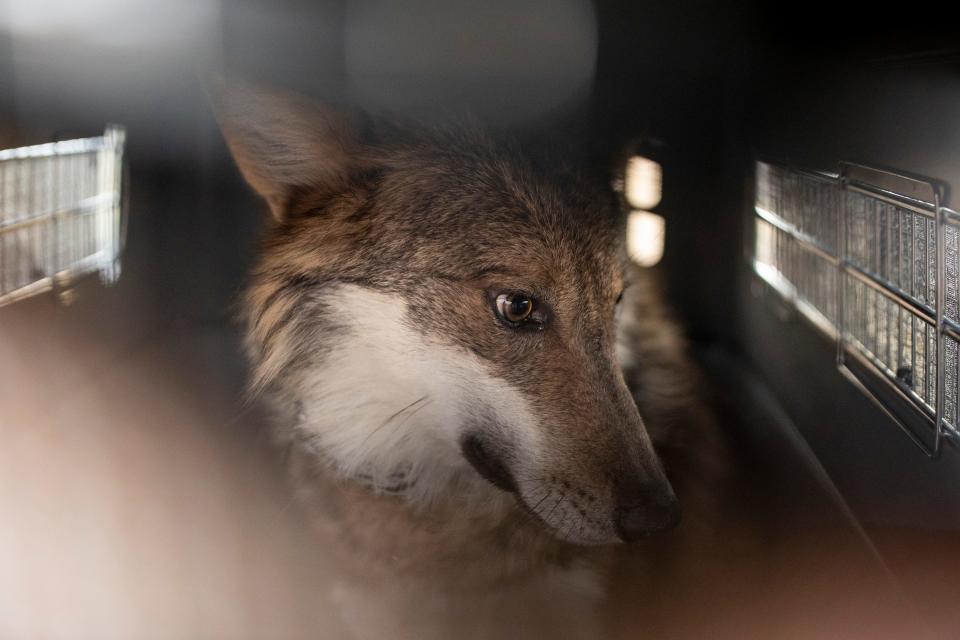Endangered Mexican wolf treks further north in New Mexico
ALBUQUERQUE, N.M. (AP) — An endangered Mexican gray wolf has roamed beyond the species’ recovery area into the more northern reaches of New Mexico, reigniting a debate over whether the predators should be confined to a certain stretch of the southwestern U.S. as wildlife managers work to boost the population.
The U.S. Fish and Wildlife Service said Tuesday that members of the recovery team have been tracking the lone female wolf and have notified ranchers in the area, although they say it’s not a threat to human health or public safety.
Wolf-livestock conflicts have been a major challenge of the reintroduction program over the past two decades, with ranchers saying the killing of livestock by wolves remains a threat to their livelihood despite efforts by wildlife managers to scare the wolves away and reimburse some of the losses.
With news of the wolf traveling north of Interstate 40 in New Mexico, state and federal wildlife officials have been reminding people that Mexican wolves are protected under the federal Endangered Species Act and that hazing or harassing the predators is not allowed, unless the wolf poses a threat to human safety.
More:US, Mexico join forces to recover the Mexican gray wolf in the wild
Collared wolves have trekked north of I-40 only a handful of times since 2015, when the Mexican Wolf Experimental Population Area was established, according to the Fish and Wildlife Service.
One of the more well-documented cases involved a wolf that was captured, relocated and later found dead after heading north again. In 2022, there were reports that another female lived for months west of Albuquerque until she moved into Arizona and then back into southwestern New Mexico.
In the latest case, the wolf numbered 2754 dispersed from the Rocky Prairie pack at the end of 2022.
“We are monitoring f2754's movements while working with our partners to evaluate management options,” agency spokeswoman Aislinn Maestas said Tuesday.

Environmentalists have been fighting in federal court to overturn a requirement that the Fish and Wildlife Service capture wolves that roam north of I-40.
In court documents, environmental groups have argued that using the interstate as the northern boundary for wolf recovery effectively curbs natural dispersal and cuts off access to the Grand Canyon and Southern Rockies. They pointed to the two regions as essential for establishing another population to meet recovery goals.
The Mexican wolf is the rarest subspecies of gray wolf in North America. According to the most recent survey released in early 2022, there were at least 196 Mexican wolves in the wild in New Mexico and Arizona. It marked the sixth straight year the population had increased.
There is also a small population of wolves in the wild in Mexico.
U.S. officials said they were preparing to begin this year's survey in Arizona and New Mexico in the coming weeks.
This article originally appeared on El Paso Times: Endangered Mexican wolf treks further north in New Mexico

